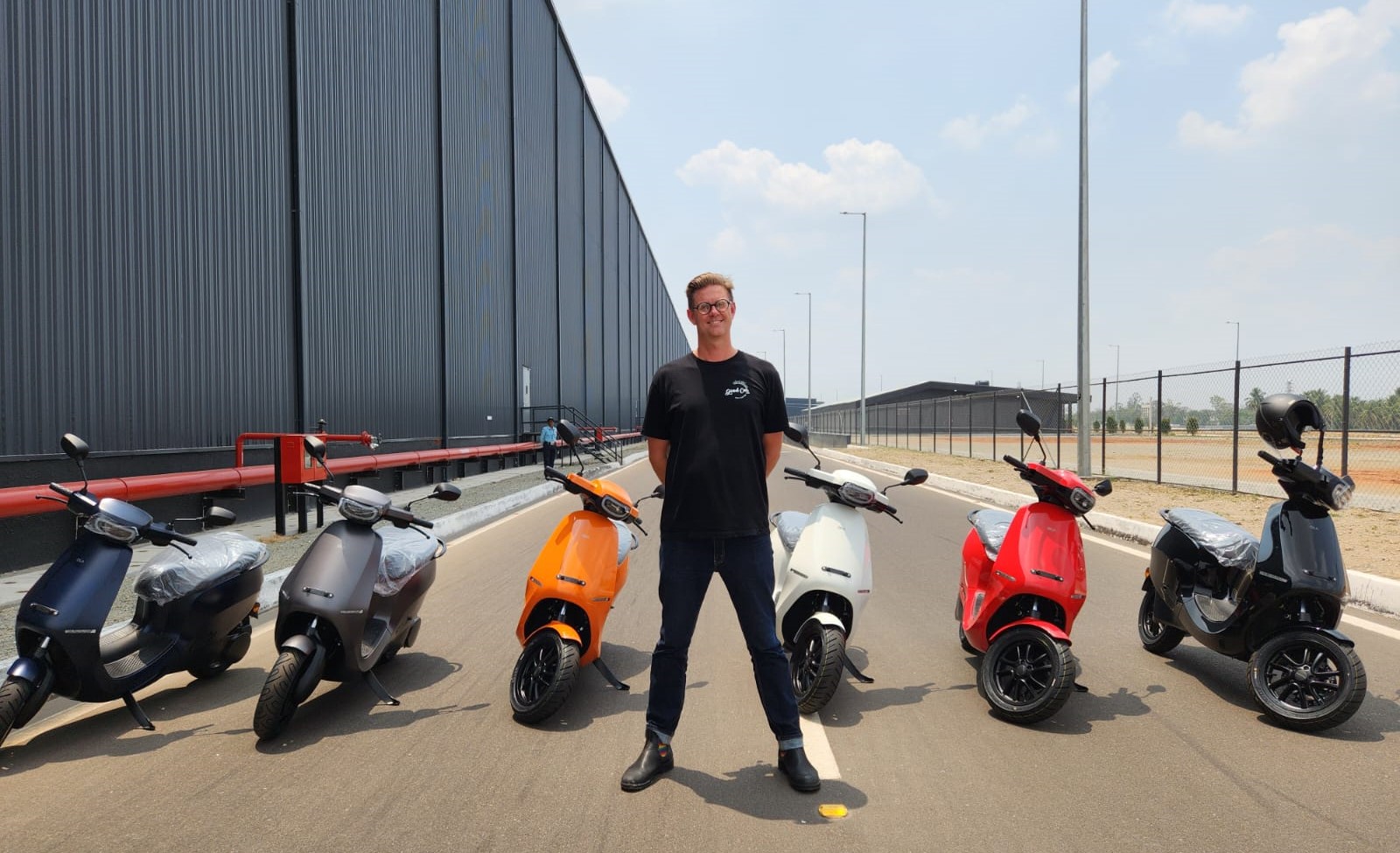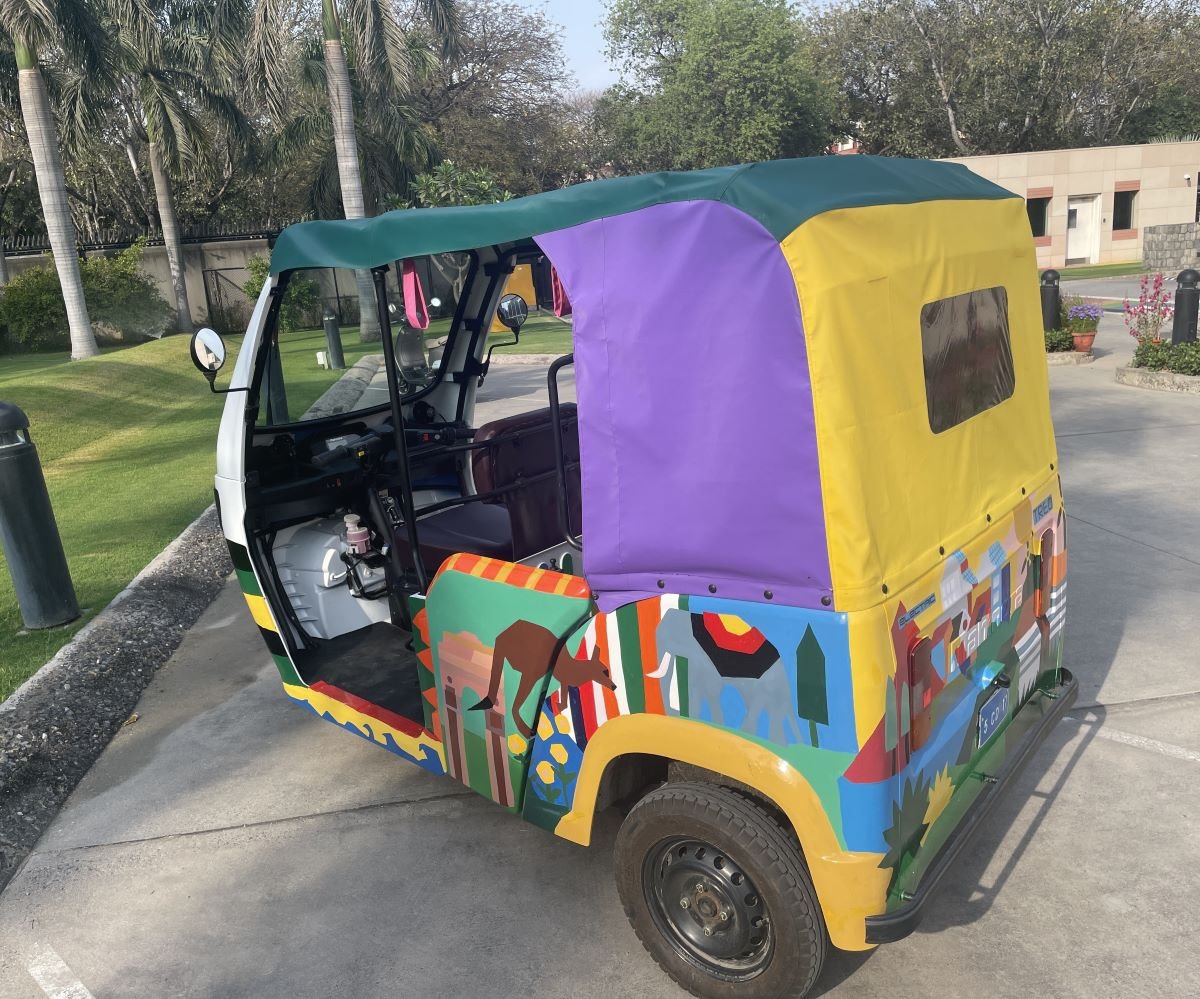
Good Car’s Co-Founder Anton shares his experience and some of the many highlights being part of the recent Smart Energy delegation to India.
The whole world has to decarbonise its transport. And the world's largest country, India, is forging its own EV pathway. This year 1 million new EV’s will land on India's roads, but perhaps it's not what you think?Recently I had the pleasure to join the Smart Energy Councils delegation to India. Apart from watching the first day of the fourth test in Ahmedabad ;) my mission was to understand the Indian EV ecosystem and what might be learnt for Australia and other countries.
India is now on-roading around 1 million EV’s per annum, compared to around 30,000 each year in Australia. That's a massive number, however, the key thing is that in India EV really does mean “Electric Vehicle”. The vast majority of EV’s hitting the road are scooters “2 wheelers (2W)” and to a lesser degree “3 wheelers (3W)” AKA auto rickshaw or tuk tuks. Each month a cluster of EV 2W manufacturers including OLA, TVS, HERO and ATHER are putting around 100,000 EV scooters on the road. These are truly affordable, with the India sticker price of around $2,500 each! This is mass manufacturer of affordable EV’s and the manufacturing capacity is scaling at an audacious rate.
Electrification of transport on a massive scale!
Ola is the most ambitious enterprise operating in this space. Ola started as a rideshare platform similar to Uber. Over the last few years it has pivoted dramatically to manufacturing EV’s. We visited their “Future factory” in Pochampalli. This facility was constructed and was delivering completed vehicles after just 11 months. Using a high degree of automation and precision engineering their current facility is delivering a vehicle every 40 seconds. The factory has expansion plans to increase production out to an EV every 2 seconds! That's around 10 million EV’s per year from a single factory. However even at this rate it would take a single factory 140 years to produce an EV for every Indian! That's why they are working on plans to build further factories for different 2 wheelers and 4 wheelers as well as a battery manufacturing Gigafactory , all this at a scale I’m not sure considered yet in Australia. It’s an amazing vision being delivered.










So what's a two wheeler EV like? In one word “Fun”
Step on board, no key, just enter your PIN#, kick off and go. Completely smooth and powerful riding and a low, low centre of gravity, meaning the vehicle can cut and swerve with ease. It has a 4kWh battery pack rated for around 180 km of riding. Easily sufficient for around town and a spin to the beach.
One of the reasons we love this solution (and electric push bikes as well) is that the resources required to decarbonise someone's transport using an electric scooter is around 1/10 to 1/20 of that required by an electric car. For example most new EV’s in Australia are sporting a 60-80kWh battery pack vs 4kWh for an Ola scooter. When you add up the whole package an Ola weighs in at 130kg vs a Tesla Y at 2000kg. They are not a like-for like solutions, however by going 2 wheeler, 10 to 20 times as many people could decarbonise for the same price and materials - what's not to like about that?
EV’s benefitting from the Tech Startup Ecosystem
The EV industry is also benefiting from the tech/startup ecosystem that has catapulted India into being one of the leading developers in the world. We had the pleasure to visit NASSCOM 10,000 startups in Bangalore who are 9 years into a 10 year plan to develop 10,000 startups. A number of these are leaning into the EV space, with companies creating awesome EV smarts in Charger deployment, Demand Management and Fleet Management. The next EV killer app, may well be conceived and coded in Bangalore.
And the funky stuff.
There is a whole manufacturing segment for micro-cars that exists in India (and Europe). Small vehicles that are used for city mobility are classified similar to a motorcycle, rather than requiring the box and dice safety protections of a full sized vehicle
We had the pleasure of visiting KP of PMV Electric. They are working on a tiny city smart car. This thing is super space efficient, fits 3 people into it and takes up the parking space of a motorcycle. For Angels out there he is working on investment to start unit production and would love to chat ;) Even the oldest 3 wheelers are getting the modern treatment with EV conversions and new EV builds of the Auto Rickshaw. This photo is of a 100% electric 3 wheeler I took for a spin in Delhi. What a hoot, although I would love to see the braking system meet this millennium.

Carshare has also got an EV reboot. A company called Blu Smart Mobility is a 100% electric urban mobility solution. With a focus on cleanliness and on time pickup Blu Smart is gaining a strong and loyal following in the cities its active in. Notably they have separated the car ownership from the driver!
What about the four wheelers? AKA cars!
India has three large manufacturers of EV’s that we haven't seen on the Australian Market (Tata, Mohindra and Citroen). Tata is the current leader, with at least 3 EV models on the market. The build quality is very high with the Nexon EV rated as NCAP 5 stars (highest safety rating). With vehicles starting from the equivalent to $28,000 AUD drive away (in India), these are awesome options when it comes to increasing the number “affordable” EVs. We were really impressed by the Citroen EC3. This little cross over hatch comes in a poppy orange paint job and is a new build EV that retails for $21,000 (In india). While these cars are running a relatively small 30kWh battery pack, these little cars would manage the daily commute and city running about for close to half the price of the cheapest new EV on Australian roads?
It's interesting to note, from an Automotive ecosystem perspective India has a strong manufacturing base. They have a 220% tariff on all imports, so there has been and continues to be a strong incentive for car makers to set up their manufacturing in India for the Indian market. For the EV transition the manufacturing base needs to include Batteries. Currently a number of manufacturers are building modules, packs and battery management systems though the Lithium battery cell manufacturing isn't occurring on-shore at scale. It won't be long, given great research laboratories like the Voltrez research lab, who have developed dendrite free EV cells. And for commercialisation, our friends at the Ola Battery Innovation Center are rapidly connecting their R+D facility into cell manufacturing in an EV battery Ola Gigafactory in 2024!
Overall we see that there are some great synergies between Australia and India in the EV space. From a critical mineral perspective Australian rare earth and Lithium deposits are expected to find a manufacturing partner with India in the very near future. There is a range of Australian based tech/EV companies that could readily find a pathway to scale manufacturing in India. For Good Car we think that “small is beautiful”, The idea that with smaller vehicles we can decarbonise 3 households for the resources of 1 (Citroen EC3 vs a large EV) or 10 for the resources of 1 (2 wheeler instead of 4) seems a beautiful thing. Changing the size and number of cars on the road is a huge part of decarbonising our transport.
Do we need more small cars like the PMV, sub $30,000 new EV’s like the Citroen EC3 or would you love to jump on a Ola 2 wheeler EV and slip through the traffic? Let us know in the comments or filling in this form.
Namaste
Anton Vikstrom
The Good Car Company would like to thank The Smart Energy Council, The Australian High Commission in Delhi, Austrade, The Australia India Business Council, the Australia-India Trade Association and all of the amazing enterprises, research institutions and organisations we visited across India ;)
